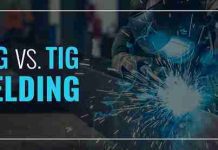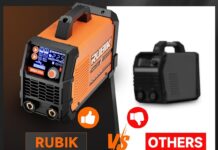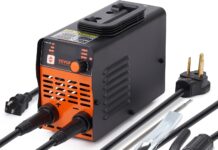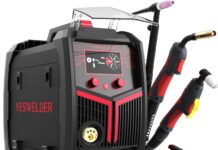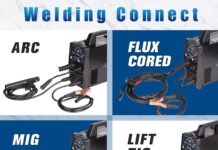Maintaining and caring for a welding machine is essential to ensure its longevity and optimal performance. In this article, we will explore some key tips and techniques that will help you keep your welding machine in top-notch condition. From routine cleaning and inspection to ensuring proper storage and handling, these simple practices can go a long way in extending the lifespan of your welding machine and allowing you to achieve precise and flawless welds every time. So, let’s delve into the world of welding machine maintenance and learn how to keep your equipment running smoothly for years to come.
Inspecting the Welding Machine
When it comes to maintaining and caring for a welding machine, regular inspections are crucial. By inspecting the welding machine, you can identify any potential issues or areas of concern before they turn into major problems.
Checking for Damage and Wear
The first step in inspecting the welding machine is to check for any visible signs of damage or wear. This includes looking for cracks, dents, or any other physical damage to the outer casing of the machine. Additionally, it is important to inspect the welding cables and connections for any fraying or damage. If any damage is detected, it is important to repair or replace the damaged parts before further use.
Inspecting Connections and Cables
Next, we need to thoroughly inspect the connections and cables of the welding machine. Loose connections can result in poor performance and even safety hazards. Carefully check all the connections, ensuring they are tight and secure. Additionally, inspect the cables for any signs of wear or damage. Replace any damaged cables to ensure the safe and efficient operation of the welding machine.
Examining Cooling System and Gas Supply
The cooling system and gas supply are essential components of a welding machine. Proper cooling is necessary to prevent overheating and maintain optimal performance. During the inspection, check the cooling system for any leaks, blockages, or signs of wear. Ensure that the coolant levels are adequate and that the system is functioning properly.
In addition, examine the gas supply system. Ensure that the gas cylinders are securely fastened and that the pressure is within the recommended range. Inspect the gas hoses for any signs of damage or deterioration. Any issues with the cooling system or gas supply should be addressed promptly to avoid potential disruptions in the welding process.
Cleaning the Welding Machine
Regular cleaning of the welding machine is essential for maintaining its performance and longevity. By removing dust and debris and keeping the various components clean, you can prevent build-up that might interfere with its functionality.
Removing Dust and Debris
Dust and debris can accumulate on the welding machine over time, especially in industrial settings. To clean the machine, start by using a soft brush or compressed air to remove any loose dust and debris from the surface. Pay special attention to the venting areas and cooling fans, as these can become clogged with dust, hindering the machine’s ability to cool properly.
Cleaning the Wire Feeder
The wire feeder is a critical component of a welding machine. Over time, it can become dirty, leading to feed issues and reduced performance. To clean the wire feeder, disconnect it from the power source and remove any wire spool. Use a soft brush or compressed air to remove any dust or debris from the feeder mechanism. Make sure all moving parts are free from obstructions and operate smoothly.
Maintaining Electrode and Holder
The electrode and holder are key elements in the welding process. Regular maintenance of these components not only ensures better welding performance but also extends their lifespan. Remove the electrode from the holder and inspect it for any signs of wear or damage. If necessary, replace the electrode with a new one. Clean the holder to remove any built-up debris or residue that may interfere with its functionality. A clean electrode and holder contribute to a more effective welding operation.
Replacing Consumable Parts
Certain parts of a welding machine, known as consumables, are designed to wear out over time and require regular replacement. Replacing these parts at the appropriate intervals is crucial for maintaining the machine’s performance and achieving high-quality welds.
Replacing Contact Tips
Contact tips are one of the most frequently replaced consumable parts in a welding machine. They directly contact the welding wire and can become worn or damaged over time. Regularly check the contact tips for signs of excessive wear or damage. If needed, replace them with compatible tips to ensure a proper electrical connection and smooth wire feeding.
Changing the Shielding Gas
Shielding gas is essential for protecting the weld pool and preventing contamination during the welding process. However, over time, the shielding gas cylinder can become empty or contaminated. Regularly check the gas levels and quality, and replace the shielding gas as necessary. It is important to ensure that the correct type of gas is used for the specific welding process being performed.
Renewing the Nozzle and Diffuser
The nozzle and diffuser play a crucial role in controlling the welding arc and protecting the consumables. Inspect these parts regularly for any signs of wear, damage, or blockages. If any issues are identified, replace the nozzle and diffuser with new ones that are compatible with the welding machine. By renewing these parts, you can ensure proper gas flow and an optimal welding performance.
Calibrating and Testing
Calibrating and testing the welding machine is an important step to ensure accurate and consistent welds. By calibrating the welding voltage and wire feed speed, testing the ground connection, and performing welding quality checks, you can ensure that the machine is functioning at its best.
Calibrating Welding Voltage and Wire Feed Speed
Proper calibration of welding voltage and wire feed speed is critical for achieving the desired weld quality. Use a calibrated multimeter to measure the voltage and adjust it to the recommended level. Similarly, ensure that the wire feed speed matches the desired setting. Consult the manufacturer’s instructions or seek expert advice if needed.
Testing Ground Connection
A reliable ground connection is essential for safe and effective welding. Use a multimeter to test the ground connection and ensure that it has a low resistance. If necessary, clean the contact surfaces to ensure a good connection. A faulty ground connection can lead to various welding issues, so testing and maintaining the grounding system is essential.
Performing Welding Quality Check
After calibrating the welding machine, it is crucial to perform a welding quality check. Weld a test piece using the desired settings and inspect the quality of the weld. Look for any defects such as lack of fusion, porosity, or excessive spattering. If any issues are detected, double-check the settings and make any necessary adjustments. Regularly performing welding quality checks helps ensure consistent and high-quality welds.
Lubricating Moving Parts
Proper lubrication of the moving parts in a welding machine is essential for smooth operation and longevity. By applying lubricants to bearings and gears and maintaining the wire spool holder, you can minimize friction and prevent premature wear and tear.
Applying Lubricants to Bearings and Gears
Bearings and gears are critical components that enable the smooth movement of various parts within the welding machine. Regularly lubricating these parts helps reduce friction, minimize wear, and extend their lifespan. Use an appropriate lubricant recommended by the manufacturer and apply it according to the instructions. Be cautious not to over-lubricate, as excess lubricant can attract dust and debris.
Maintaining Wire Spool Holder
The wire spool holder is responsible for smoothly feeding the welding wire into the machine. Over time, it can become dirty or damaged, leading to feeding issues. Regularly clean the wire spool holder and remove any debris or residue that may impede the wire feeding process. Additionally, inspect the holder for any signs of wear and replace it if necessary. Proper maintenance of the wire spool holder ensures consistent wire feeding and reduces the risk of welding defects.
Storing and Transporting the Welding Machine
Proper storage and safe transportation of the welding machine are essential to protect it from damage and ensure its longevity. By following the recommended guidelines, you can extend the lifespan of the machine and maintain its performance.
Properly Storing the Machine
When storing the welding machine, ensure that it is kept in a clean and dry environment. Protect it from excessive dust, moisture, and temperature fluctuations. If possible, cover the machine with a waterproof and dustproof cover to further safeguard it. Additionally, disconnect the power source and secure the cables neatly to prevent any damage.
Securing the Machine for Transportation
When transporting the welding machine, take precautionary measures to prevent any damage or accidents. Ensure that the machine is securely fastened to a transportation vehicle to prevent shifting or tipping during transit. Use appropriate restraints or straps to secure the machine and protect it from potential impact. Always transport the welding machine upright and follow all applicable safety regulations.
Safety Measures
Working with a welding machine involves inherent risks, so it is crucial to prioritize safety measures. By using personal protective equipment, ensuring proper ventilation, and avoiding overloading the machine, you can minimize the risks associated with welding operations.
Using Personal Protective Equipment (PPE)
Personal protective equipment (PPE) is essential for protecting operators and maintenance personnel from potential hazards. This includes wearing welding helmets, safety glasses, heat-resistant gloves, welding jackets, and appropriate footwear. Always follow the manufacturer’s recommendations for PPE and ensure that it is in good condition before use.
Ensuring Proper Ventilation
Welding produces fumes and gases that can be hazardous if inhaled. Ensure that the work area is well-ventilated to prevent the accumulation of harmful fumes. If necessary, use additional ventilation systems such as local exhaust hoods or fans to remove welding fumes effectively. Adequate ventilation helps create a safer working environment for everyone involved.
Avoiding Overloading the Machine
Each welding machine has its limitations in terms of capacity and duty cycle. Overloading the machine can lead to overheating, reduced performance, and potential damage. Always adhere to the recommended amperage and duty cycle limits specified by the manufacturer. Be mindful of the welding parameters and avoid exceeding the machine’s capabilities. This not only ensures safe operation but also prolongs the machine’s lifespan.
Routine Maintenance Schedule
Establishing a routine maintenance schedule is essential for ensuring the long-term performance and reliability of the welding machine. By creating a schedule, performing regular inspections, and documenting maintenance activities, you can stay on top of maintenance tasks and address any issues promptly.
Creating a Maintenance Schedule
Create a maintenance schedule that outlines specific tasks to be performed at regular intervals, such as weekly, monthly, and yearly. Consider the manufacturer’s recommendations and consult industry standards to determine the appropriate maintenance intervals. Assign responsibilities to designated personnel to ensure that the maintenance tasks are completed on time.
Performing Regular Inspections
Regular inspections are a vital part of the routine maintenance schedule. These inspections should cover all the key areas mentioned in this article, including checking for damage and wear, inspecting connections and cables, examining the cooling system and gas supply, cleaning the machine, and replacing consumable parts. Perform inspections according to the established maintenance schedule and address any issues promptly to prevent further damage or operational inefficiencies.
Documenting Maintenance Activities
Documentation is an important aspect of maintenance. Keep a record of all maintenance activities, including inspections, repairs, and part replacements. This documentation serves as a reference for future inspections and helps identify any patterns or recurring issues. It also provides valuable information for warranty claims, equipment history, and compliance with safety regulations.
Training and Education
Proper training and education are essential for both the operators and maintenance personnel of a welding machine. By providing the necessary training and ongoing education, you can ensure that individuals have the knowledge and skills to safely operate and maintain the welding machine.
Proper Training for Operators
Operators should receive comprehensive training on the safe operation of the welding machine. This training should cover topics such as machine setup, proper welding techniques, safety procedures, and troubleshooting common issues. Regular refresher courses and performance evaluations help ensure that operators remain up-to-date and proficient in their welding skills.
Continuing Education for Maintenance Personnel
Maintenance personnel should receive ongoing education to stay abreast of the latest advancements in welding technology and maintenance practices. This can be achieved through training programs, workshops, seminars, or industry conferences. Encourage maintenance personnel to pursue certifications or professional development opportunities to enhance their skills and knowledge in welding machine maintenance.
Keeping Up with Manufacturer Recommendations
Manufacturers often provide guidelines and recommendations for the maintenance and care of their welding machines. Stay informed about any updates, recalls, or product bulletins issued by the manufacturer. Following their recommendations ensures that you are using the welding machine in the intended manner and maximizing its potential.
Troubleshooting Common Issues
Even with proper maintenance and care, welding machines can encounter common issues. By familiarizing yourself with these issues and knowing how to address them, you can minimize downtime and keep the welding machine functioning optimally.
Identifying and Resolving Poor Welding Quality
Poor welding quality can be caused by various factors, such as incorrect settings, worn-out consumable parts, or improper technique. When encountering poor welding quality, start by inspecting the settings, ensuring they match the welding requirements. Check the consumable parts, such as contact tips or nozzles, for wear or damage. If necessary, replace the worn-out parts or adjust the technique. Revisiting the machine’s calibration and performing welding quality checks can help identify and resolve issues related to poor welding quality.
Dealing with Welding Machine Malfunctions
Welding machine malfunctions can be frustrating, but with proper troubleshooting techniques, they can be resolved efficiently. When a malfunction occurs, start by checking the power source, ensuring it is properly connected and providing the correct voltage. Inspect the machine for any visible signs of damage or loose connections. Consult the manufacturer’s troubleshooting guide and follow their recommended steps. If the issue persists, contact a qualified technician for further assistance.
Addressing Power Supply Problems
Power supply problems can significantly impact the performance of a welding machine. If experiencing power supply issues, start by checking the main power source, ensuring it is stable and providing the required voltage. Inspect the power cables and connections for any damage or loose connections. If using a generator, ensure it is appropriately sized to handle the welding machine’s power requirements. If power supply problems persist, consult an electrician to diagnose and resolve the issue.
In conclusion, maintaining and caring for a welding machine involves various tasks and considerations. By regularly inspecting the machine, cleaning its components, replacing consumable parts, calibrating and performing tests, lubricating moving parts, and implementing proper storage and transportation practices, you can ensure the longevity and optimal performance of the machine. Prioritizing safety measures, establishing a routine maintenance schedule, providing training and education, troubleshooting common issues, and staying up-to-date with manufacturer recommendations further contribute to the proper maintenance and care of a welding machine. With these practices in place, you can maximize productivity, avoid unnecessary downtime, and achieve high-quality welds consistently.



